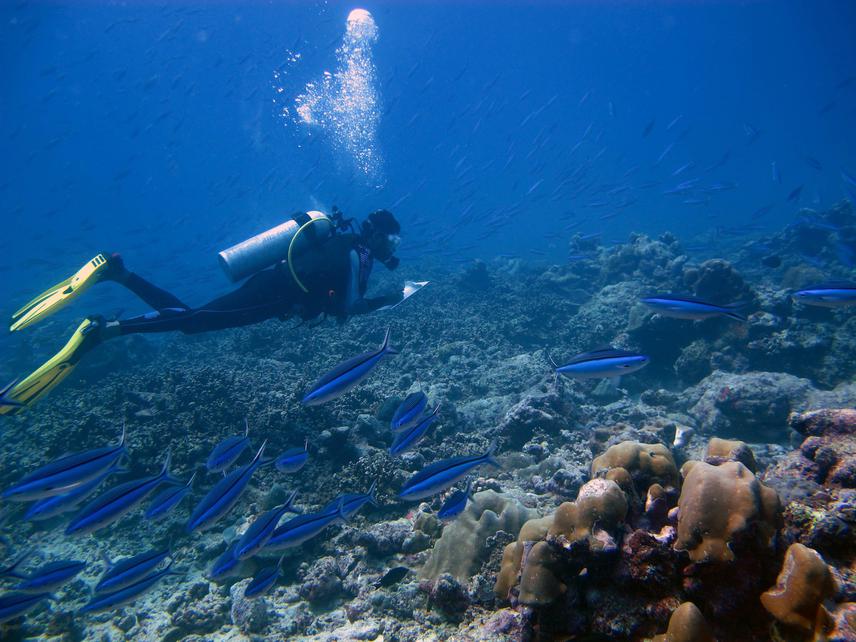Rucha Karkarey
Other projects
3 Sep 2012
Conserving Top Benthic Predators in the Lakshadweep Reefs: Identifying Priority Areas for Grouper Conservation and Ecosystem Functioning
3 Feb 2015
Coping Mechanisms and the Vulnerability of a Keystone Reef Predator (Peacock Hind, Cephalopholis argus) to Climate-Change in Lakshadweep.
12 Dec 2016
The Status and Growth of a Coral Reef Fishery Targeting Groupers (Epinephelids) in the Lakshadweep Archipelago, India
The aim of my study is to understand the effects of coral degradation and loss of habitat structure, in the wake of the 2010 mass bleaching event on the diversity and distribution of apex ambush predators (groupers) in the Lakshadweep Islands. I also want to look at whether the abundance and distribution of these ambush predators is an important driver in structuring reef fish communities in the Islands, where fishing pressure on the reefs is relatively low.

Underwater fish transects.
The Lakshadweep archipelago in the western Indian Ocean, like other isolated island systems is highly vulnerable to ENSO-related mass bleaching events. Atolls in this Lakshadweep archipelago were badly impacted by the 1997-1998 ENSO event which caused mass coral bleaching and mortality of the reefs. Reef recovery after this event was found to be very site-specific. However, detailed surveys of reef fish communities in these islands have not been conducted since 2005 (study by Rohan Arthur). This year, the Lakshadweep islands have undergone another ENSO related mass bleaching event, providing us an opportunity for studying immediate post-bleaching effects on the reef fishes as an important baseline for long-term monitoring.
Bleaching renders the corals susceptible to physical damage which brings about a loss of reef structure and coral cover. Thus, coral reef fish assemblages may exhibit dramatic changes in community composition, in relation to declining habitat structure. These changes could ultimately affect ecosystem function and have significant effects on the ability of reef fish communities within the ecosystem to resist and recover from future disturbances. Predatory fish species are among the most important trophic guilds of reef fishes, and have a major role in structuring reef fish communities. However, bleaching-related loss of habitat may negatively affect abundance and distribution of apex predators such as Groupers, that use ambush for capturing their prey and thus rely heavily on structure.
In Lakshadweep, the mainstay of commercial fishing is skipjack tuna, which has caused a great reduction in fishing pressure on coral reefs. Due to low fishing pressure, ambush predators like groupers (usually not targeted by fishers) are the dominant apex predators on these reefs. Thus, the effect of loss of structure on groupers, in the absence of targeted fishing, can be understood without the influence of any confounding factors.
My study aims to understand the effects of loss of habitat structure, after the 2010 mass bleaching event on the diversity and distribution of apex predators (groupers) in the Lakshadweep Islands. This project also involves testing whether the abundance and distribution of ambush predators is an important driver in structuring reef fish communities in the Islands.